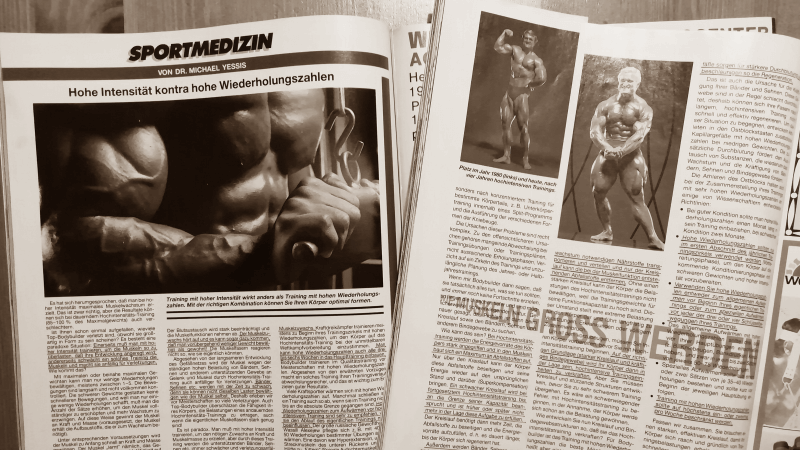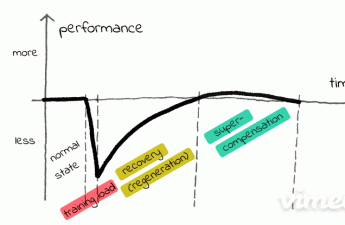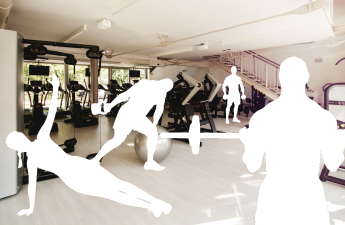Are there any recommendations as to the number of repetitions within the sets of an exercise with which one should train in order to promote regeneration? What are the effects of a few high-intensity repetitions and what on the other hand are the effects of many low-intensity repetitions? The answer is already given here: The point is to combine both in a meaningful way.
Continuation of the article of March 12, 2020.
Introductory remarks (repetition of part 1)
Since I already belong to the older generations – the mention of my year of birth 1965 could tempt some younger readers to stop immediately – I am rather responsible for historical considerations in the category of knowledge topics. This inevitably brings with it other source information than in the contributions of my daughter Julia, who is currently working on her diploma thesis on the fitness trainer course.
Despite the age of some sources, however, these are often relatively timeless insights that can be of very concrete value even decades after their publication. This time: The reflections on repetition numbers by Dr. Michael Yessis from 1985, the year of my time with the Austrian Army.
Summary of part 1
Part 1 of this article is based on an earlier article by Michael Yessis from 1984 and emphasizes the following thoughts:
- Blood plays a central role in the supply of nutrients and the disposal of waste products in the muscles. Both are constantly required, especially when the muscle is exposed to high loads during training and is to build up strength or mass.
- For this reason a good capillarisation of the muscles (increased number of fine blood vessels) is advantageous.
- Training with high repetition numbers promotes such capillarisation.
How muscles get big
A professional article with this headline appeared in the German Sport Revue from April 1985. For those who can’t remember this time (or weren’t even born then): The Sport Revue was edited by Albert Busek and was a translated version of the American Muscle & Fitness, and texts and pictures were often congruent. The mentioned author, Dr. Michael Yessis, published his article in the American M&F, of course, but unfortunately only the German version is available to me. Please be aware that the following quotations have been translated by me and are therefore probably not identical to the original American edition.
High repetition rates? What’s the point?
Many bodybuilders and power athletes are sceptical when it comes to training with lighter weights and higher repetition rates: Sayings like “only heavy makes heavy” may have truth to them in some respects, but on the other hand they also make athletes shy away from alternative approaches with lower loads. This results in a blockage in the head, so that a number of sensible measures are not even considered.
Dr. Michael Yessis sums things up very nicely in his 1985 article:
Faster and more thorough recovery allows you to do more training (and more high intensity training), which in turn results in fast and effective muscle growth. […] You will find that under the right conditions, your progress in strength and muscle mass will again match the effort you put into your training.
Article by Dr. Michael Yessis: How muscles get big – The blood is decisive, in German Sport Revue 4/1985, p. 66
All in all, these are quite motivating perspectives, aren’t they?
Finest blood vessels as advantage
Yessis clarifies that a high number of capillaries (finest blood vessels to supply the muscle fibers) brings some clear advantages:
- The repair of damage caused by hard training in the muscles is faster.
- Thus the capillaries accelerate the necessary regeneration (repair and restoration of damaged muscle structures).
- This allows the next training stimulus to be set earlier.
No matter how long your regeneration takes: with improved capillarisation, the time required for regeneration will most likely be shorter. And this allows you to set training stimuli more often without overloading the muscle or generally getting into a state of overtraining.
Note: In myTRS, advanced users already have the option of shortening or lengthening the calculated individual regeneration time for each individual muscle part within a certain range. These settings can be found under “User / My data” by clicking/tapping the button “My individual regeneration”.
The prevention of injuries
Ultimately, however, it is not only about repairing the micro-trauma, this smallest injury to muscles caused by hard training, but also about preventing larger injuries to tendons, ligaments and connective tissue. These structures are much less well supplied with capillaries and therefore need longer than the muscles themselves to recover from damage.In the longer term, this leads to a delicate condition: the muscles can develop more and more strength, but the tendons do not become stronger to the same extent – and thus become a weak point.
Yessis therefore advises to actively strengthen these structures:
The additional blood circulation promotes the exchange of substances, which in turn promotes the growth and strengthening of ligaments, tendons and connective tissue.
Dr. Michael Yessis, source as above
The matching saying: A chain is only as strong as its weakest link.
High repetition rates as preparation for high intensity
Yessis leaves no doubt as to what should come first and what should come next from his perspective: First and foremost for him is clearly the building up of circulation and supporting structures such as tendons and ligaments. Only in the next step he sees heavy training aimed at increasing muscle mass.
It would be a serious mistake to start with high intensity training on the assumption that the body will already get used to the stress.
Dr. Michael Yessis, source as above
So far, so good. But how long should one devote to such preparation? Yessis for that:
If you are in good condition, you should include high repetition numbers in your training for one month, if you are in a weak condition for two months.
Dr. Michael Yessis, source as above
These guideline values could be used as a suggestion for planning the next training year.
High repetition rates for warming up: Type and number
However, “preparation” can also be understood in the sense of immediate preparation before the execution of difficult repetitions, namely as warming up. According to Yessis, this could look like this:
Use high repetition rates either for a general warm-up before starting your actual workout or for a specific warm-up before each of the three or four key movements of your workout.
Dr. Michael Yessis, source as above
General warm-up would thus be the use of high repetition numbers at the beginning of the workout:
General warm-up with a high number of repetitions should include three or four of your main exercises (e.g. squats, bench presses, deadlifting), in one or two sets of 50-75 repetitions each.
Dr. Michael Yessis, source as above
The other form, the special warm-up, could be integrated into the workout as follows:
Special warm-up should consist of one or two sets of 35-40 repetitions each and should be done shortly before the start of the respective main exercise.
Dr. Michael Yessis, source as above
Concluding food for thought
The following questions, which deal with the issue of high repetition rates, could be used as inspiration for the design of your own training:
- How plausible do you find the described correlations? Do you think that you could benefit from using high repetition rates?
- Would there be room in your training schedule (one to two months) for a serious attempt with this approach?
- Would a targeted use of training with high repetition rates as a warm-up (general or specific) in the course of your workout make sense?
Think over the explanations of the two parts of this article and form your own opinion. And find out if and how training with high repetition rates can enrich your training and give you advantages for your build-up training!



